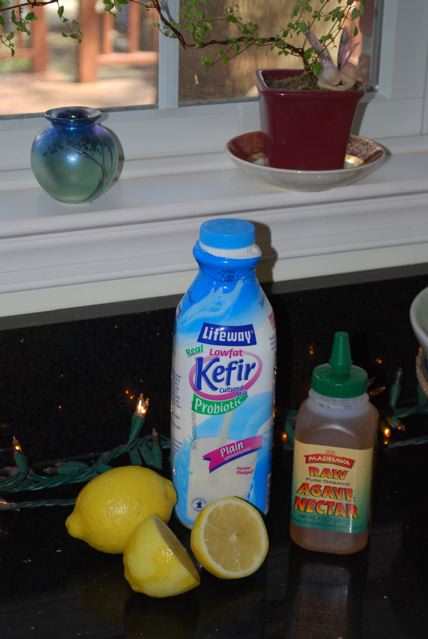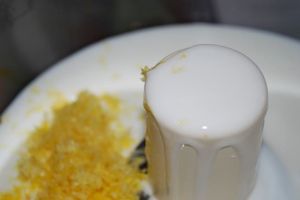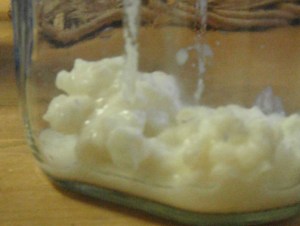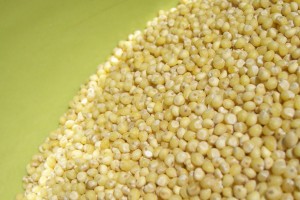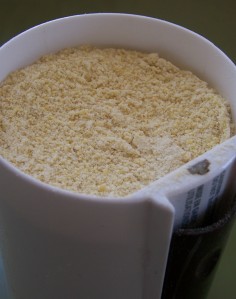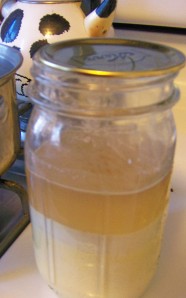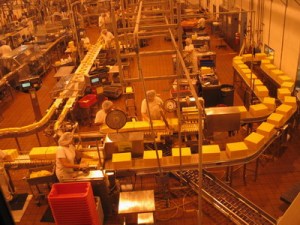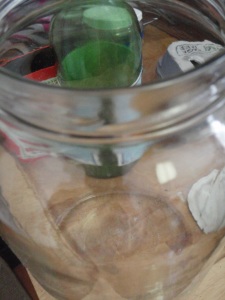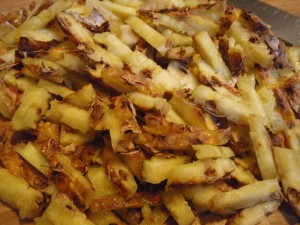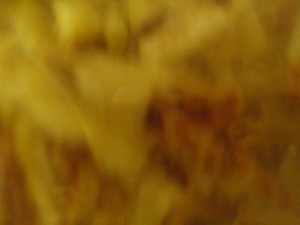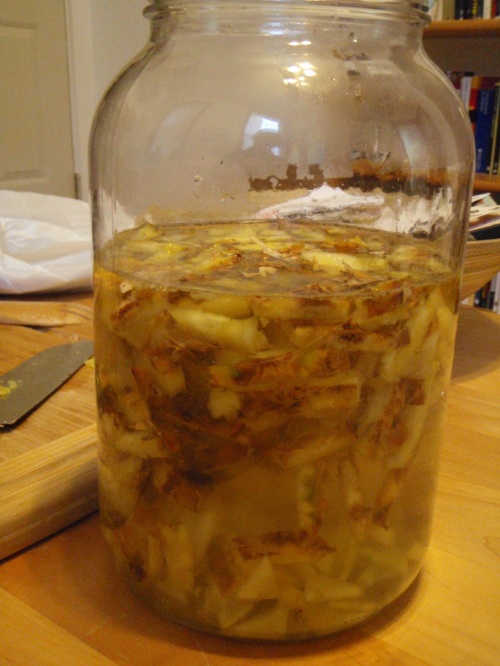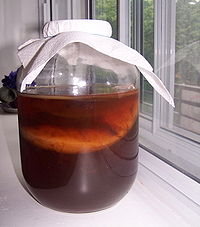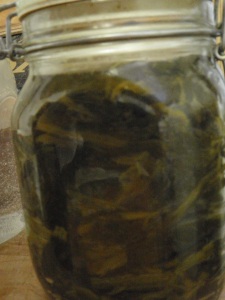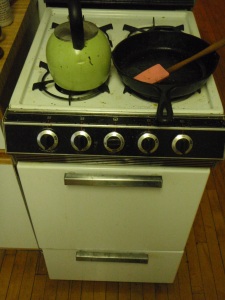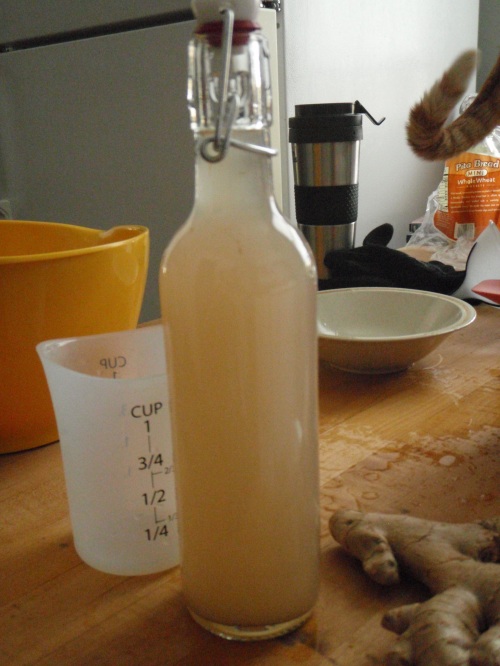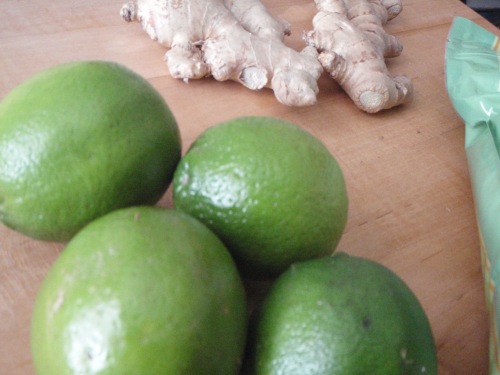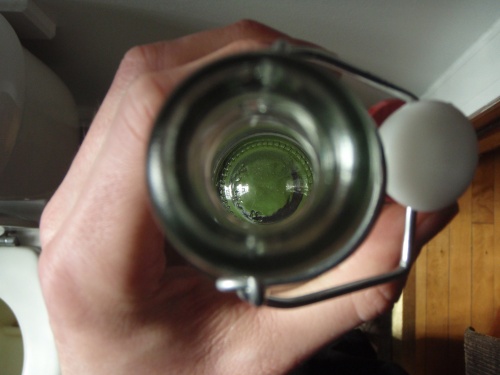As everyone knows and most people admit, sourdough is amazing. You can do incredible things with a little goo you can keep in your fridge. I sometimes read that sourdough starters are high maintenance. Well, your mom is, and that didn’t stop your dad, your uncle, me, or the swim team. Right?
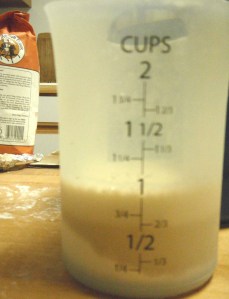
Figure 1: Food for the yeast. Flour looks on in background.
Besides, the statement’s just plain wrong. Many sourdough starters do have to be fed a combo of flour and water every few days. This is an “Amish Friendship” starter, though. It’s actually sweet, fed on equal parts sugar (or honey), (soy) milk, and flour every week or two. There’s a shot of the stuff I feed it to the left (Figure 1).
So I scoop out a little to make bread with and then I feed what’s left of the starter (with Figure 1). I leave the starter out for a few hours to propagate in the warm, but then put it back in the fridge until I need it again in a week or two. It can even go in the freezer for cryogenic-style storage if necessary.
There are a lot of ways to make a starter. My way is great, I think, and I really recommend it, but there are a bunch of different strategies for capturing the wild yeast in your environment and you can make great stuff with any of them.
However you get your ferment bubbling, this recipe adapted from Jeffrey Hamelman’s Bread book for a wheaty bread is a good one to start using it on. The steps are straightforward and the dough’s easy to work with.
———-
Time:
Probably 18 hours from start to finish.
Ingredients:
Flour- 6 and 1/2 cups “high extraction whole wheat” or (I used King Arthur Flour‘s white whole wheat. Thanks, Kai.) or else about 5 and 3/4 cups whole wheat and 3/4 cup white flour.
Water- 3 and 1/4 cups
Salt- 1 tablespoon
Starter- 3 tablespoons
Yield:
2 delectable loafs
———
THE MICHE
A miche is a very thick sort of pre-ferment. Get it started the night before you plan to get cooking.
Combine:
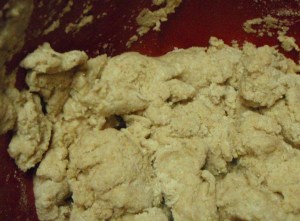
Figure 2: Awesome.
1/2 cup water
3 tablespoons starter
1 and 1/2 cup flour
(or 1 and 1/4 cup wheat and 1/4 cup white flour)
This is just the beginning. Stir the well-fed sour in the water and add flour. Set it in a warm or at least draft-free place for 12-16 hours, like the oven.
Yeast, as you may know, basically does three things. It eats sugar, it reproduces, and makes carbon dioxide. This clump (Figure 2) is going to be shockingly fluffy after 16 hours. Poke it, because you will not be able to resist, and then put it aside to work on …
———-
THE DOUGH
Combine:
water- 2 and 3/4 cups
flour- 5 cups (or about 4 and 1/2 cups whole wheat and 1/2 cup white flour)
1. Autolyse: LEAVE IT ALONE (for between 30 and 60 minutes)
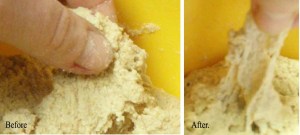
Figure 3: Gluten!
The gluten is basically what breadmaking is all about. Autolyse, a short rest period after ingredients are combined, allows the flour to hydrate and gluten to bond, according to the esteemed Professor Raymond Calvel (what a baker!) and makes the dough easier to work with.
Can you see the gluten? hint: FIGURE 3! See, in the first shot the dough is just clumpy. Then I let it be for an hour. Some time relaxing allows the dough to get mad stretchy.
2. Add the rest
Add:
Salt- 1 tablespoon
All the puffy clump you mixed up already
Ok, sprinkle on the salt, throw this together with the miche, and knead for about 10 minutes. As you knead, remember that the point is to work the gluten. Stretch the dough, fold it, and stretch it again. Sprinkle more flour on if necessary.
———
THE PROCESS
1. Let rise 40 minutes
Self explanatory
2. Fold

Figure 4: Fold that dough!
This strengthens the dough and deflates the dough a bit so that the yeast won’t produce so much gas that they burst the gluten. Fold it in half, in half again, and sort of gather it together into a ball, sprinkle with flour, and leave it (covered) to rise again.
3, 4, 5, 6: Wait 40 minutes, fold it again. Wait 40 minutes, fold it again. That’s 3 folds, total.
7. Divide in to two and shape each ball into a nice loaf.

Figure 5: Shaping an oblong loaf
This is actually simple. Fold all four sides in as above (Figure 5) til you get to something that looks like the 3rd photo. Then flip it onto its seam and roll it back and forth a little. I’m serious. Keep that up (hands on the pointy-ish ends to help smooth them) until you get something like the 4th photo.
8. Let it rise 2 hours. I just put bowls over my loaves to keep them from getting dry and crusty skins, because I need the oven to pre-heat for…
———

Figure 6: If you slash the loaf a little, you can get a nice split like this.
THE BAKING
Put a sheet in and heat the oven to 440. It’s important to get the oven nice and hot if you want a really good oven rise.
Bake at 440 for about 15 minutes, and then turn the oven down to 410. Keep trucking for about 45 minutes (that’s an hour, total).
—————
HOLY CRAP YOU MADE:
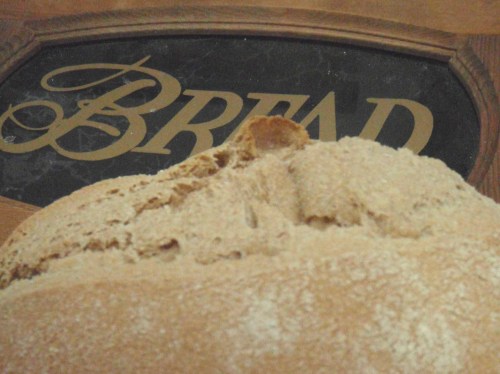
Figure the Last: Look, the breadbox is menacing the bread like Putin's face menaced Alaska in that fabulous image that was circulating on the internets during those dark days when we thought maybe the VP of the US would be funny in a DIFFERENT way.

